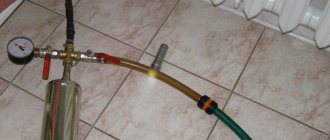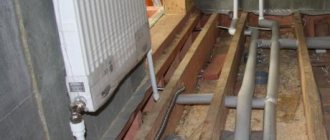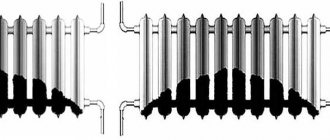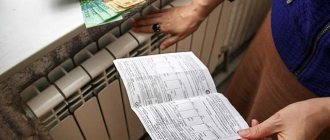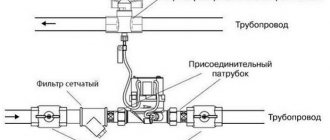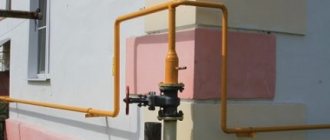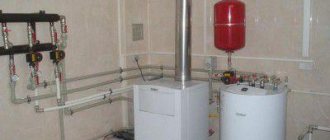Flushing a heating system is the removal of internal contaminants from pipes, radiators, fittings, and boiler equipment.
- Why flush your heating system?
- When should you flush your heating system?
- Methods for flushing the heating system
- Flushing the heating system in an apartment building
- Flushing the heating system in a private house
- Cost of flushing a heating system
- Heating system flushing act
- Flushing the heating system yourself

Why flush your heating system?
Why flush your heating system?
- to reduce heating costs,
- to improve the efficiency of the heating system,
- to increase the service life of heating equipment,
- to reduce the risk of emergency situations.
- In the heating system, salt, silt and sand are deposited on the walls of pipes, radiators, shut-off valves, boilers, and heat exchangers.
The coolant liquid (hot heating water) brings all this to the heating systems.
Year after year, the layer of deposits becomes thicker, and every millimeter of dirt reduces heating efficiency by 10-15%.
Deposits on the walls harden and are then more difficult and expensive to remove.
As a result, heating costs rise and the temperature in the building is below the required minimum.
In a neglected situation, scale deposits in the heating system lead to accidents and failures.
This is what it looks like:

Why is this necessary?
In the vast majority of old houses, the filling, risers and heating connections are installed with steel pipes. Black steel has an unpleasant feature: the rough walls of pipes tend to collect dirt, gradually becoming overgrown with scale. The build-up is formed mainly from rust and calcium salts.
Rust is a product of corrosion of pipe walls. The source of calcium is sedimentary rocks, which are eroded by water on the way to the water intake.
Not only that: over time, spills, hoses and radiators become clogged with silt - suspended matter that settles in them, which enters the heating devices along with the coolant and settles in areas with a minimum speed of its movement.
The consequences of decreased pipe flow and the appearance of sludge deposits in radiators are very predictable:
- Reduced circulation rate . It leads to a drop in the temperature of the return pipeline and, accordingly, to a decrease in the temperature in residential premises;
- Cooling of the last sections of sectional batteries. It is there that the water speed is minimal, so silt begins to accumulate in the lower collector of the outer sections and over time completely blocks the circulation in them;
- In the most advanced cases, defrosting of the heating system or its individual sections. If the coolant circulation stops in cold weather, the water in the pipes and radiators will freeze very quickly. Since when the state of aggregation changes to solid, it increases in volume, pipelines and heating devices will be torn.
When should you flush your heating system?
The heating system must be flushed before the start of the heating season.
This is routine maintenance to keep your heating system in good working order.
Regular flushing of the heating system allows you to use inexpensive cleaning methods.
Bulk and old deposits will have to be removed using specialized washing equipment.
Scheduled flushing of the system increases the trouble-free service life of the heating system several times.
After installation, major repairs, as well as routine repairs with replacement of pipes, it is also necessary to test and flush the heating system.
The timing and methods of carrying out mandatory flushing of heating systems are defined in the following documents:
- “Rules for assessing readiness for the heating season” (approved by Order of the Ministry of Energy of Russia dated March 12, 2013 N 103);
- “Rules and norms for the technical operation of the housing stock” (approved by Resolution of the State Construction Committee of Russia dated September 27, 2003 N 170);
- “Rules and norms for the technical operation of the housing stock” (approved by Resolution of the State Construction Committee of Russia dated September 27, 2003 N 170);
- “Rules for the technical operation of thermal power plants” (approved by order of the Ministry of Energy of the Russian Federation dated March 24, 2003 N 115)

Inspecting radiators using a thermal imager
Unscheduled flushing of the heating system must be carried out:
- when heating efficiency decreases (hot coolant is supplied to the input, and the batteries are cold);
- in case of uneven heating of the radiators (in this case, it is necessary to exclude the presence of an air lock in the radiators);
- reduction in system capacity due to contamination.
To determine accurately, you need to do an inspection of the heating system.
The easiest and fastest way to inspect the heating system and radiators is with a thermal imager.
The examination will determine the thickness and chemical composition of the deposits.
After this, we select the appropriate washing method.
Now we’ll talk about ways to flush the heating system.
Stages of crimping
The work is carried out at the following frequency:
- when starting a new system;
- annually after the heating season;
- after flushing or repairing the heating main with replacement of pipes.
For apartment buildings, preparation is as follows:
- Inspection of shut-off valves in elevators, central pipes, risers. On cast iron valves, the seals are changed, the paronite gaskets between the connection flanges are renewed, and unusable bolted connections are replaced.
- Using visual observation, pipes and fittings are examined for the presence of cracks, chips, corrosion, and defects. Make repairs if necessary.
- Check the thermal insulation of risers and main pipes in basements.
Crimping procedures and testing are carried out taking into account the parameters of heaters and heating equipment indoors. Regulations allow the use of operating pressures of up to 6 bar for cast iron heating radiators. When they are in the walls, the maximum is 10 bar.
Hydraulic tests are carried out as follows: the system is checked as a whole, then a pressure higher than the working one is applied to the thermal unit.
According to Rules 115 clause 9.2.13., tests are carried out at a pressure not lower than:
- 1 MPa - elevators, heaters for heating and hot water systems;
- 0.6 MPa - cast iron and steel heating radiators;
- 1 MPa - convector, panel heaters;
- working pressure plus 0.5-1 MPa for hot water supply;
- pressure recorded in the manufacturer's instructions for air heaters.
The test pressure in steam systems is selected by the manufacturer from maximum to operating minimum:
- minimum - not lower than 0.2 MPa, but not less than 1.25 working;
- the maximum is established by strength calculations according to standards;
Crimping occurs at temperatures from + 5 degrees. If negative - in emergency cases.
- Filling the system with cold water. During work, the temperature of the liquid is no more than 45 degrees. The pressure increases gradually. Control is carried out using a pressure gauge.
- Once the set pressure is reached, the system remains at rest for about 30 minutes.
- During downtime, an inspection is carried out for leaks in pipes and batteries. Make sure there are no leaks. A method of control is to place toilet paper in dangerous places or wrap pipes with it. When there are leaks, spots of water and silt are visible.
- Control occurs according to the readings of the pressure gauge. The leak occurs in a place inaccessible to observation. A drop in pressure will warn of this.
Upon completion of pressure testing, a certificate of fitness for use is issued.
Tests are carried out by certified companies. In apartment buildings, it is prohibited to carry out heating work yourself. This is done by employees of operating organizations - housing office, management company, housing department, REU. They are required to undergo annual certification at MOEK.
Water hammer method of flushing the heating system
the hydraulic shock (or hydromechanical) method for flushing heating systems of short length (private house, small apartment building).
For minor stains, this method can also be used for large buildings.
For the water hammer method, we connect a pump, which not only ensures circulation in the system, but creates a series of water shocks of the coolant.
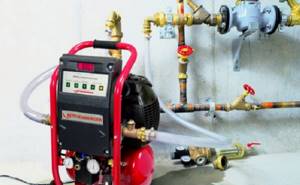
Water hammer method of flushing the heating system
Under the influence of water hammer, deposits on internal surfaces are destroyed and then washed away by the flow of water into the sewer.
Water absorbs impact energy well, so the load on the walls of pipes, fittings and radiators is small.
If your heating system is in good working order, there is little risk of damage or leaks.
For preventive cleaning of the heating system, this method is sufficient.
To remove more complex contaminants, other washing methods are used.
Now we will tell you about them.
What and how to flush heating radiators
Let's talk about dry cleaning. You can use different means. From the experience of “users” there are the following options:
- pour in whey for a day, turn occasionally;
- pour a pack of regular soda, pour boiling water, several treatments help with most precipitation;
- the same, but with caustic soda - it works better;
- pour a solution for cleaning a car radiator, add boiling water, drain after a few hours;
There is one point in all these methods: it can corrode the gaskets. Then you will have to disassemble everything into sections, change the gaskets and put everything back in place. So many people advise rinsing thoroughly with water, or, in extreme cases, with air - using a car compressor.
Hydropneumatic method for flushing a heating system
The hydropneumatic method is the main method for flushing heating systems of apartment buildings and large buildings.
For such flushing, we will install a pump with a compressor that will circulate the coolant and supply the required amount of air to the system.
The air-water mixture bubbles in the heating system and actively destroys stubborn deposits.
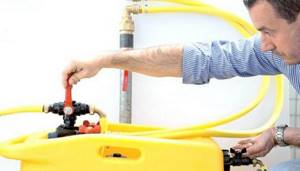
Hydropneumatic method for flushing a heating system
All contaminants are also washed out of the system by the flow of water.
This method of flushing the heating system is suitable for removing contaminants even from old cast iron radiators.
The cavitation flow of water lifts contaminants even from hard-to-reach areas of the system.
The hydropneumatic method puts less stress on pipes and fittings, but requires the connection of expensive flushing equipment.
There is another way - chemical.
With the chemical method, everything is more complicated, but let's take it in order.
Non-standard methods
Elevator without nozzle
How and with what to flush the heating system of an apartment building in the absence of a compressor and a control campaign? Unfortunately, this also happens far from large cities.
In this case, running the elevator unit without a nozzle for two to three days often helps. When the inlet, house and domestic hot water valves are turned off, the water-jet elevator is removed, the nozzle is removed from it, and the suction (the bottom flange of the elevator) is muffled with a steel pancake.
- of the coolant in the heating circuit increases
- Circulation accelerates . The nozzle no longer restricts the flow of water from the supply thread of the heating main. The difference between the beginning and end of the circuit is not the standard 0.2 kgf/cm2, but 2-3 atmospheres.
Why is this procedure abnormal? Because in this mode:
- Heat consumption increases many times (that is, its supplier incurs losses);
- The temperature regime of the heating main operation is disrupted. Excessively hot water enters the return line. Due to the technological cycle of the CHP plant, before a new circulation cycle, it has to be cooled to the required temperature.
Chemical method of flushing the heating system
For this method we need special chemistry (acid, alkali).
We add the reagents to the coolant and connect the circulation pump.
The liquid passes repeatedly throughout the system, the chemistry dissolves contaminants.
It is necessary to select the chemical composition of the reagents in accordance with the type of contaminants, material of pipes and heating radiators.
You also need to accurately calculate the flushing time so as not to damage the inner surface of the heating system.

Chemical method of flushing the heating system
The difficulty of the chemical method is that after treatment it is impossible to drain the coolant with washed dirt and chemicals into the sewer.
Aggressive chemicals must be disposed of in a special way.
After chemical treatment, the system is thoroughly washed with running water - the chemical must be removed from the system.
After flushing, we will check the system for leaks - we will test it with pressure.
There is always a possibility of failure of heating system elements (areas with severe corrosion).
Depending on the size and complexity of the heating system, we select the flushing method and the order of work.
Let's give a few examples.
Chemical flushing or major repairs
Chemical flushing of the heating system involves using solutions containing alkalis and acids.
In this case, a chemical solvent and corrosion inhibitor, which protects the metal from corrosion, is introduced instead of a heating agent. The reagent circulating in the heating system dissolves all deposits and scale on the walls of the pipes. Before draining the contents, a neutralizer is added. This helps to significantly reduce the toxicity of the chemical.
For each case, a specific composition of the solution is selected, its duration of action is calculated, the degree of contamination of the heating system and what material it is made of are taken into account.
Flushing heating pipes using this method allows you to perform this procedure all year round, even during the heating season, without turning off the heating. High-quality hydrochemical flushing of heating systems is performed once, this is often enough for the system to operate efficiently for a long time.
Chemical flushing of heating systems increases its service life by 10-15 years and significantly increases the heat transfer of radiators. The effectiveness of such a procedure is comparable only to a major overhaul, but it benefits in cost. Chemical flushing of the heating system, the price of which is ten times lower, is an excellent alternative to major repairs.
There is only one drawback of this type of washing - the rather high toxicity of the drugs used. If the pipes are thin or their seal is broken, then using this method is strictly prohibited, because highly concentrated reagents can destroy their integrity and create an emergency situation. Aluminum batteries are not washed with this aggressive method.
Heating flushing using chemical reagents should only be performed by experienced professionals. You should not try to do it yourself or entrust it to a novice amateur. The consequences can be the most unpredictable. The master plumbers of our company will successfully cope with this task, select the necessary composition and calculate the time. Flushing heating systems, the cost of which our specialists offer is reasonable, will help the customer avoid additional costs.
Flushing the heating system in a private house
In a private house, closed heating systems are mainly installed.
If the pipes are filled with prepared coolant (desalinated and purified water, antifreeze), then little pollution is formed in such a system.
For prevention, a hydrodynamic method is sufficient.
Before flushing, we will study the documentation for the heating system, carry out diagnostics and suggest an appropriate method.
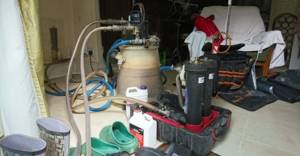
Flushing the heating system in a private house
In autonomous heating systems, water heating devices are used - these are various boilers.
The coolant in the boiler heats up, and it is in the heating areas that the main contaminants are formed.
The efficiency of boiler equipment when there is contamination inside the system drops several times.
Fuel costs are rising, and heat is becoming less and less.
There is only one way: to inspect the heating system and flush it.
Pipes and radiators are now mostly made of plastic and aluminum alloys, and there is little rust in such systems.
It is important that the heating is closed, with a membrane-type expansion tank.
It is also important that prepared water with a low salt content is used as a coolant.
If these conditions are met, you can flush the heating system of a private home much less often.
Often it is enough to rinse it with running water once every few years.
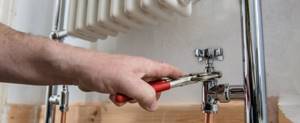
Flushing the heating system in an apartment building
Radiator cleaning
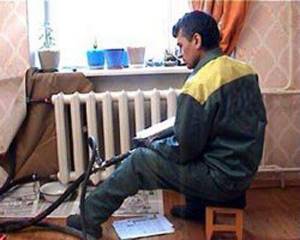
An important point is regular flushing of heating radiators
Sometimes it is necessary to clean one of the main elements of the system - the radiator. This is immediately noticeable by the fact that it does not warm up to the required temperature, compared to neighboring batteries. To do this, you need to carry out a number of activities that are carried out before the heating season.
- To begin with, the coolant is drained from the system and the radiator is dismantled.
- You can wash the battery at home by placing it in the bathtub. First you need to cover it with a thick layer of fabric or old things, which you can then simply throw away. This is necessary in order not to spoil the enamel coating of the bathtub.
- All plugs are removed from the battery. Don’t forget to install a mesh over the drainage hole to make it easier to collect loose deposits coming out of the radiator.
- The watering can is removed from the shower hose, and the water from it is directed into the radiator under maximum pressure. The radiator is sometimes turned to drain all the water and deposits.
- In addition to the stream of water, you can add a piece of reinforcement, which will help clean off large build-ups.
- If it is possible to carry out this event on the street, then it is better to do this using a long hose that can be inserted anywhere deep into the battery.
- When the water from the battery begins to flow clear and clean, it can be installed back.
- After installing the radiator and installing all its parts on the seals, it would be useful to carry out a control pressure test. Only now will the work be considered complete and the system can be filled with water.
If the time has come to clean the heating system or its individual elements, correctly assess your strength. It may be better to call a specialist who will quickly cope with this task and perform it competently than to risk your property or the property of your neighbors. If the system is assembled incorrectly after cleaning, you may end up with more than one leak that will be difficult to quickly repair.
In this article we will find out what and how to flush the heating system in a private house or apartment building. In it you will find a description of several washing methods that I have personally tested at different times and have proven to be effective. Let's get started.
Flushing the heating system in an apartment building
A large house means a large heating system.
Such systems may have several circuits and many fittings.
We flush the heating system of an apartment building after studying the design documentation.
Depending on the system configuration, we flush the entire system or individual circuits, blocking the fittings.
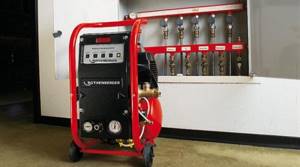
Heating flushing price
How to clean an aluminum radiator
Use of chemicals
Aluminum is an extremely capricious metal. When choosing what and how to rinse aluminum radiators, you need to focus exclusively on the product whose composition will affect the deposits without affecting the walls themselves.
Chemical washing is good because it does not require dismantling the batteries and can be carried out even at the height of the heating season.
It is based on 2 stages of work:
- Dissolving scale.
- Flushing and removing them from the system.
The disadvantages of this type of cleaning include the increased toxicity of chemicals. When carrying out this procedure, you need to use protective measures and be very careful.
Attention is also required when diluting a chemical composition if it is sold as a concentrate. An incorrect proportion can destroy aluminum along with scale. The most popular is the Master Boiler Power concentrate, which is suitable for all types of pipes and radiators
You can also use “folk” remedies, for example, vinegar, whey or caustic soda
The most popular is the Master Boiler Power concentrate, which is suitable for all types of pipes and radiators. You can also use “folk” remedies, for example, vinegar, whey or caustic soda.
Find out useful information about aluminum batteries on our website:
Hydrodynamic flushing
This is one of the most labor-intensive ways to clean a heating system. It is based on a shock jet of water, under the pressure of which the scale peels off the walls of the radiator.
Sequence of work:
- The carrier is completely drained from the line.
- Areas that need to be washed are identified.
- Part of the pipe is removed, and in its place a hose with a special nozzle is connected, the end of which is inserted into the main line.
- Water under the action of a pump under high pressure is supplied to the radiator, sweeping away scale and all debris along the way.
After the cleaning is completed, the system should be filled with water and run through it several times to remove scale removed from the walls of the radiator.
Hydraulic flushing
This work can be carried out during the heating season, since it only requires running water through the system:
- Before starting work, a hose is connected to the drain valve, the second end of which is discharged into the drainage sewer system.
- The tap on the supply side opens and the layer of dirt disappears under the flow of incoming water.
- Cleaning can be considered complete once clean water flows through the system.
This method is used for regular cleaning of batteries. If the system has not been cleaned for a long time and the contamination is strong enough, it will not help.
Pulse washing
If the question is asked how to clean an aluminum heating radiator with minimal risk to it, then the answer is clear - using pulse washing.
This is a fairly “young” and progressive method that guarantees safety for the aluminum walls of heaters, but it requires special devices, so calling in specialists is indispensable.
The method is based on a short-term pulse effect on water, during which a shock wave is formed that moves through the system under a pressure of 12 atmospheres. This allows you to remove scale of any thickness without damaging the walls of the radiator, provided that it can withstand such water hammer.
This method is effective if:
- The diameter of the pipes does not exceed 4 inches.
- Even 60 m away from the device that creates the pulse effect, radiators are effectively cleaned of scale.
- Pulses do not affect the integrity of fittings and line components.
This flushing method increases the efficiency of the radiator by up to 25%, which practically returns the design to the parameters corresponding to the product that has just left the factory assembly line.
Heating flushing price issue
The price for flushing the heating system is determined based on the following data:
- length of the heating system;
- system configuration (contours, floors);
- presence of heat exchangers;
- level of system contamination;
- materials of pipes and radiators;
- method of flushing a heating system.
To find out the exact cost of flushing your building, give us a call.
We will advise you and inform you of the exact cost of all work.
How to check for scale?
Naturally, based on the external data of the heating system, even if it was installed not long ago, it is difficult to determine the presence or absence of plaque on the internal surfaces of all components.
But determining this is not as difficult as it might seem at first glance. It is enough to carefully monitor the operation of the heating system. The main signs of the presence of plaque or scale on the internal surfaces of pipes and radiators for cleaning include the following changes:
- increasing the heating time of system elements;
- the presence of extraneous noise coming from the heating boiler, which was not previously observed;
- there is a temperature difference on the radiator - the lower part of the device is much colder than the upper surface;
- the heating battery is completely cold, while the pipe leading to it remains hot;
- In the case of an electric heating boiler, electrical energy consumption may increase significantly.
Very often, a sharp increase in scale is observed after an additional heating element was connected to the main, previously used heating system.
Heating system flushing act
We have already said that flushing the heating system is a responsible procedure.
To perform flushing efficiently, you need flushing equipment, chemical reagents and experienced personnel.
Flushing the heating system is a necessary procedure for long and trouble-free operation.
Based on the results of the work, we will issue a “Heating System Flushing Certificate”
Here's what it looks like:
Act dated “___” _________ 20 ___ flushing heat consumption systems
Object____________________________________________________________ Address____________________________________________________________
We, the undersigned:
subscriber representative_______________________________________________ (position, full name, phone number)
have drawn up this report stating that “___” ___________ 20 ____ the heat consumption system of the facility was flushed.
Washing method:
- hydropneumatic
- hydromechanical
- using chemicals
Meter readings before flushing _______ after flushing ________
The quality of washing is recognized _____________________________________
Subscriber representative ___________________________/______________/
Head of the subscriber's enterprise_________________/______________/
The heating system flushing report should contain the following information:
- address of the heating system location and its type;
- washing method;
- materials used and their volume (water, chemicals);
- date of work;
- washing result;
- signatures of the parties.
It remains to tell you a little: is it possible to flush the heating system yourself?
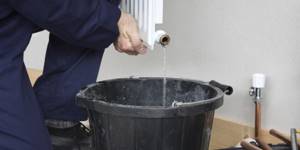
Do-it-yourself heating flushing
Signs of scale on the inner surface of pipes
The main reason to think that heating radiators need to be flushed is the appearance of the following signs:
- increasing energy consumption to achieve the usual indoor temperature;
- noticeable to the touch difference in temperature of radiators and pipes suitable for them;
- uneven heating of radiators, when their upper part becomes much hotter than the lower;
- when the heating boiler is operating, extraneous noise or crackling appears;
- increased heating time for the heating system.
Details on how to flush a well with your own hands: causes of blockage, cleaning options, prices.
How to clean soot from a boiler at home: step-by-step instructions.
Contamination may also appear after replacing radiators. In this case, their source becomes unnoticed debris in new batteries.
Flushing the heating system yourself
You can flush the autonomous heating system of a private house yourself.
For the heating system of an apartment building (as well as a business center, school, kindergarten, enterprise), it is necessary to involve a heat supply organization and specialists.
A small heating system can be flushed with running water after the end of the heating season.
To do this you need to know the system configuration.
Private houses have the simplest systems of pipes, a boiler and radiators.
There are also multi-circuit underfloor heating systems with several circuits, collectors and complex fittings.
The task is not only to flush the system, but also to fill it correctly after completing the work.
It is important to prevent the presence of air pockets in the system - this will disrupt the circulation of the coolant.
A simple system is flushed with water until clean water comes out of the drain tap.
How to clean the battery
But cleaning the entire system is not always necessary. Often the pipes are clean, but only the radiators are clogged. How to determine this? When should you flush the radiator? By temperature:
- the riser and supply pipes are hot, and the radiator is barely warm, most likely it is clogged;
- some sections or parts of the heating device do not heat;
- The temperature at the top is normal, but the bottom remains cold.
All this indicates the need to clean the radiator.
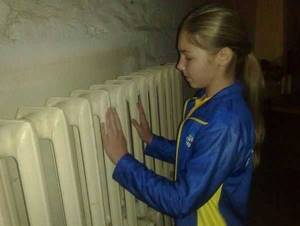
A cold or unevenly heated battery is a sign that it’s time to flush the system or radiator
Wash the batteries after the end of the heating season. If, during installation, ball valves are installed on the supply and return, and with a single-pipe wiring there is also a bypass, then this can be done during the heating season: by closing the valves, the radiator can be removed. The system will continue to operate if there is a bypass.
Remove the batteries, twist all the fittings. Take it to a place where there is a source of water. If you are washing a radiator in an apartment, it can be a bathroom, but only if it is cast iron (throw a lot of old rags at the bottom so as not to damage the enamel). In private homes, washing is done outside by holding a hose with water to the spot. Often they are washed only with water: pouring it into different collectors. With a sufficiently strong jet, even stubborn deposits are washed away.

There is a special nozzle that creates narrow, strong jets that break up even years of accumulation.
If it is not possible to organize a stream of water, close all but one of the collectors with plugs (buy at the market or in a store). Pour water inside and screw on the last manifold. Now you crush and turn the battery over.
It’s not easy to turn over cast iron, and you won’t be able to be a coward. But you can knock: with a mallet or a wooden hammer. If there are still a lot of deposits and they are not washed out with water, you can try some chemicals. Its walls are thick, so they are unlikely to be damaged.
Cast iron batteries are cleaned using serum or caustic soda; some use “Mole” type sewer cleaners. But “Mole” is a potent substance and you need to be careful with it. After filling in the product, periodically turn the battery over and tap it. After a day or two (or several hours, depending on what you filled), unscrew the cap and drain all the contents. Here you will need to think: where. Perhaps into a bucket or trough, and then into the sewer, but there are many options. Having poured out all the contents, rinse thoroughly with water: if any of the chemicals remain, corrosion will activate. After this treatment, the inside should be clean.
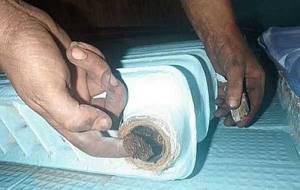
This is how a radiator can become clogged
Reinstall the radiator and check: turn on the system for a while at high pressure. This is the so-called pressure testing of the system. In an individual heating system, this is not difficult: open the feed tap and fill the system, monitor the pressure on the pressure gauge. As soon as it exceeds the operating value by 1.5 times, shut off the coolant flow. After leaving the system in this state for some time, you check its strength. After 24 hours, drain part of the coolant, bringing the pressure to normal.
To check a separate radiator in an apartment, a pressure testing device is used. It is not necessary to buy such a unit: you can rent it. They are of the manual type, they work simply: water is poured into a container, pumped inside using a manual pump, and it (the pump) creates excess pressure (displayed on the pressure gauge). Knowing the operating pressure in your system, you create a test pressure 20% higher. If it doesn’t leak anywhere, we can assume that everything went well.
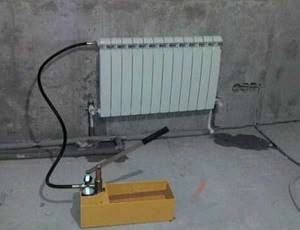
Pressure testing device for checking the tightness of the system. Puddles on the floor are evidence that you will have to fix the leak
This is a long and difficult procedure, and flushing a cast iron radiator is also physically difficult. However, keeping the system clean is the key to economical heating: the heat transfer of such a system is higher.
